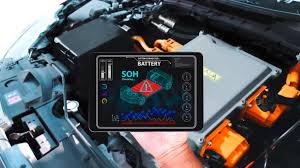Can You Drive Electric for $300/Month? (Real Calculation) Now

Can You Drive Electric for $300/Month? (Real Calculation)
Introduction
Dreaming of an electric car but your budget is tight? And Can You Drive Electric for $300/Month? We crunched the numbers to see if it’s possible on a minimum wage salary. Spoiler alert: Yes, but there are conditions you need to know about first.
The Hidden Costs of Used EVs

Battery Replacement Reality Check
When shopping for used electric vehicles, the biggest elephant in the room is battery degradation. While manufacturers typically offer 8-year warranties, older EVs may need battery replacements costing $5,000 to $15,000. A 2018 Nissan Leaf might seem like a bargain at $12,000, but if the battery capacity has dropped below 70%, you’re looking at a major expense down the road.
Charging Infrastructure Compatibility
Not all EVs work with every charging network. Older models may lack fast-charging capabilities or use proprietary connectors. This means longer charging times and potentially higher costs if you can’t access the cheapest charging options in your area.
3 Electric Models Under $250/Month in Leasing
| Model | Monthly Payment | Down Payment | Range | Key Features |
|---|---|---|---|---|
| Nissan Leaf S | $199/month | $2,999 | 149 miles | Most affordable option, proven reliability |
| Chevrolet Bolt EV | $239/month | $2,500 | 259 miles | Best range for the price, spacious interior |
| Hyundai Kona Electric | $249/month | $3,000 | 258 miles | Premium features, excellent warranty |
Prices based on current manufacturer incentives and may vary by region. 36-month lease terms shown.
Why Leasing Makes Sense for Budget-Conscious Buyers
Leasing eliminates the battery degradation risk and includes warranty coverage. You’ll also benefit from federal tax credits that get applied to your monthly payment, making EVs more affordable than ever.

How to Reduce Your Electric Car Bills
Finding Free Charging Spots
Apps like PlugShare and ChargeHub reveal hundreds of free charging locations at grocery stores, shopping centers, and workplaces. Smart planning can reduce your charging costs to nearly zero. Many employers now offer workplace charging as a benefit, essentially giving you free “fuel” for your commute.
Government Incentives and Rebates
The federal EV tax credit can save up to $7,500, while many states offer additional rebates. California’s Clean Vehicle Rebate Program provides up to $2,000 back, and utility companies often offer special EV electricity rates that can cut your home charging costs in half.
Timing Your Electricity Usage
Most utilities offer time-of-use rates where electricity costs 50-70% less during off-peak hours (typically 9 PM to 6 AM). Setting your car to charge overnight can dramatically reduce your monthly energy bill compared to daytime charging.

The Real Monthly Breakdown
Here’s what a realistic $300/month electric car budget looks like:
Lease payment: $199-249 Insurance: $80-120 (often lower than gas cars due to safety features) Charging costs: $30-60 (assuming 1,000 miles/month) Total: $309-429
To stay within $300, focus on the Nissan Leaf with minimal insurance coverage and maximize free charging opportunities.

Bottom Line: Is It Worth It?
Driving electric on a tight budget is possible, but requires careful planning and realistic expectations about range limitations. The savings on maintenance (no oil changes, brake pads last longer) and fuel costs can offset the higher upfront costs, especially if you qualify for incentives.
The key is choosing the right model for your needs and taking advantage of every available discount and free charging opportunity in your area.
Have you test-driven any of these models? Share your experience in the comments below!






















































































































































































































































































































